Imagine stepping outside to find the perfect sunset, unobstructed by buildings and electrical wires; spending an entire day exploring a forest far from the place you once called home; and forming deep, fast friendships with different people who love adventure as much as you. This is the life being led by many full-time families, the name for a growing movement of families who are prioritizing life on the road in an adventure vehicle or an RV.
According to Kevin Broom, the director of marketing for the RV Industry Association (RVIA), 1 million Americans currently live full-time in recreational vehicles. This includes everyone from retirees to a number of families the trade organization says have adopted a nomadic lifestyle, traveling from place to place to expose them to the country from a different perspective.
“What we are seeing is a much younger demographic buying. … They are doing bucket list trips when in their 30s and saying ‘This is the way we can take our kids along and all have fun doing it,’” Broom said.
Jill Denkins, the current owner of Fulltime Families, a website dedicated to the full-time family movement, says business is booming. The site provides resources, discounts and an online community for roughly 1,500 families who live on the road. It also hosts 37 private members-only Facebook groups catering to a range of families and interests. Between 2017 to 2018, the organization says it doubled its membership numbers, and since early 2018, has added at least 50 families a day to its public Facebook account.
The full-time family movement is bound together by a commitment to trading in a traditional nine-to-five routine for life on the open road. For some, this means living in a 40-foot RV for a few months at a time. For others, it’s a year of travel until the kids reach elementary-school age. And for others still, it’s an economic decision that grants them freedom from the cost of renting or owning a home and lets them pursue travel and time spent outdoors.
There are a few things most full-time RV families will agree on: The first year on the road is the hardest, everything in your RV is going to break at some point, and you will definitely have those moments when you wonder if it’s time to quit this lifestyle. But many say the pros outweigh the cons. Among the perks? Family time and a chance to teach kids the history and geography of the United States as it unfolds before their eyes, rather than from a textbook.
“Our average family is on the road for about 18 months,” Denkins said. “Then it’s either settle down and quit the road, or they commit and go full on.”
Meet five families who are living full-time on the road:
Tiny Shiny Home
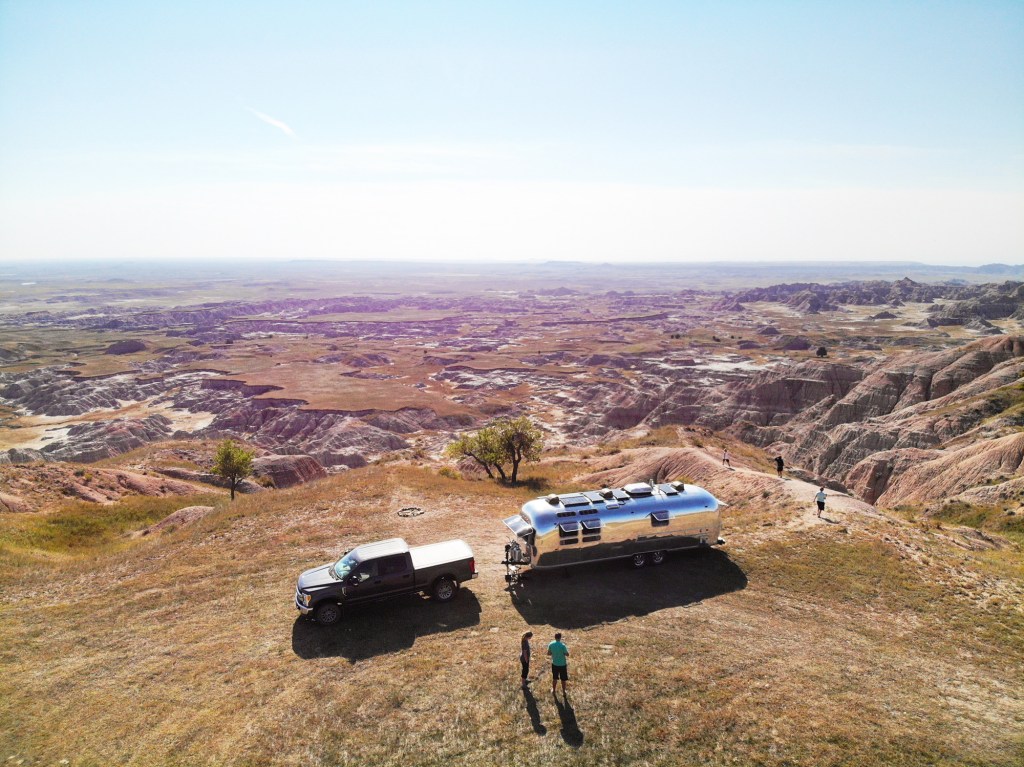
Photo Courtesy: Ashley and Jonathan Longnecker
When Ashley and Jonathan Longnecker decided to go on the road with their four kids (now 7, 9, 11, 13), they felt like they needed a big rig. They bought a brand-new fifth-wheel camper with multiple slide-out rooms and two air-conditioning units, but they quickly discovered it wasn’t for them. Something was always breaking, and by the end of the first year they were ready for a change.
They found that change when they went boondocking (off-grid camping at dispersed campsites on established roads) near Zion National Park with a group of full-time families. They opened their door to an epic desert view, and realized that they never would have experienced anything like it in their past life.
They say they chose to downsize and to focus on the type of RV lifestyle they wanted. Now, they live in an RV that can operate off-the-grid for many days at a time. Solar power, a composting toilet and water storage make off-grid living easier.
“What we realized in living this lifestyle is we get out more. Especially since we are camping off-grid,” Jonathan said. Now in their fourth year on the road, they don’t see trading in this life on the road anytime soon. They’ve even begun teaching boondocking courses to interested families.
If you follow @TinyShinyHome on Instagram, it can appear as though they are simply meandering around the country from one beautiful spot to another. Hanging out with families, baking pie and homemade bread in their trailer with the open desert right in front of them. But they didn’t hit the lottery and retire early. Each day, the Longneckers try to stick to a schedule: Work and homeschooling first, then time for adventures outside. “It’s not like we are vacationing 24/7. We’re still living a fairly ‘normal’ life in that regard. We are just doing it in remarkable places.”
“Look, you don’t have to travel full-time or renovate a vintage trailer to go make memories with your family. We just hope that our adventures inspire others to get out there and explore,” Jonathan said. “We have grown so close as a family, and love sharing this life with our kids.”
Exploring the Local Life
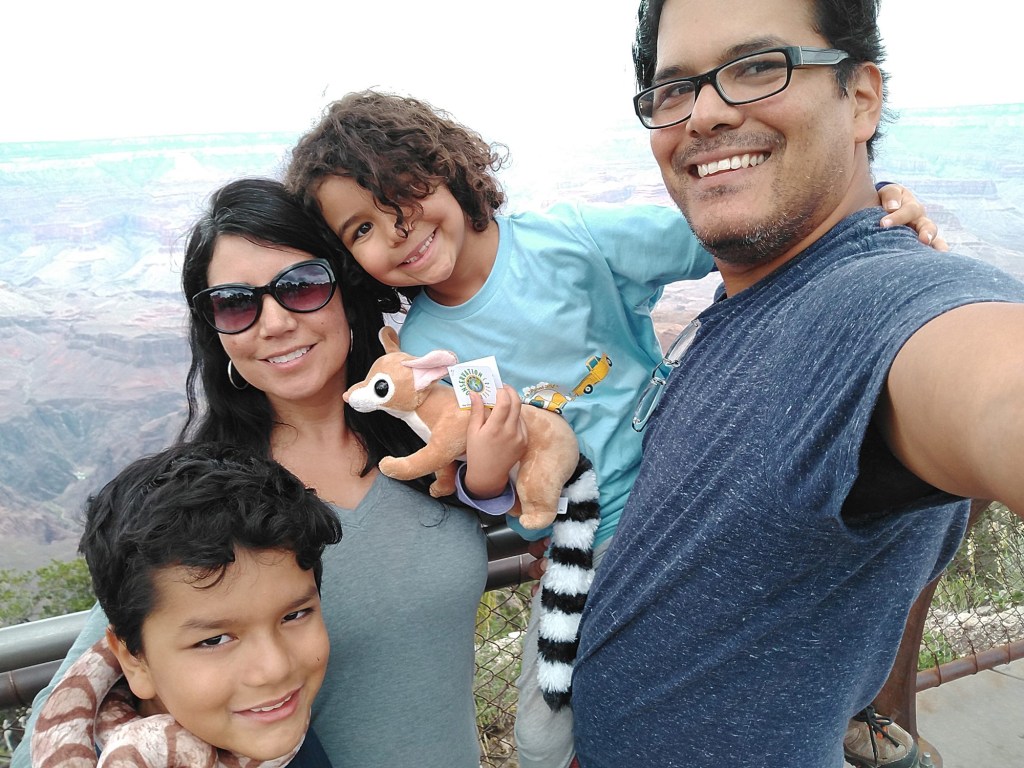
Photo Courtesy: Jessica and Robert Meinhofer
Three-and-a-half years ago, moving into an RV began to make more and more sense for Jessica and Robert Meinhofer and their two young kids. Robert had a new job, meaning the family would need to relocate, but housing was expensive where they were moving. Plus, Robert’s new position also gave him four days off a week, so there would be more time for adventures on long weekends. With zero RV experience and having barely ever camped, the Meinhofers decided living in an RV could work.
The Meinhofers say their families had worked hard to provide them with what they had. For them, living in a trailer wasn’t a symbol of success—unless it was a massive RV you planned to use on the weekends. “We thought we would be simplifying our lifestyle, and that’s what we had to explain to them,” Jessica said.
Still, RV living isn’t quite as simple as the Meinhofers thought. In their Youtube channel, they document everything from beating 100-degree heat, to cleaning the RV with little kids running around, to what happens when your truck breaks down and you find out it’s going to cost $8,000 to fix.
“We try to keep it down to earth and we don’t glamorize it. It’s not a crisis when you have a problem, it’s manageable. We try to present a realistic lifestyle for people that’s not unobtainable with a little planning,” Robert said.
Even though their kids are young (now 7 and 10) the Meinhofers consider them in every decision they make. For example, their son had a hard time leaving their close friends behind when the family first left Florida. Now, they often return to Florida for visits, so he can reconnect with friends. They also look for gatherings on the road and keep tabs on where other traveling families are headed.
“You meet families on the road and eat breakfast with them and make friendships in three hours that are stronger than friendships you will have had back home for ten years.” –Jessica Meinhofer
The Meinhofers also go out of their way to connect with other Latino and African-American families on the road. “We were in Pennsylvania and central Florida and there was diversity there. Of course, immediately when we see a Latino or African-American family, they gravitate toward us,” Jessica said.
Robert and Jessica say it’s the close family bond they’ve created from living in close quarters that keeps them committed to a full-time lifestyle, despite some ups and downs.
“It makes you stronger people and more resilient because there are campfires, drinking wine and watching sunsets, along with the hard days. You meet families on the road and eat breakfast with them and make friendships in three hours that are stronger than friendships you will have had back home for ten years,” Jessica said.
Eco Womb
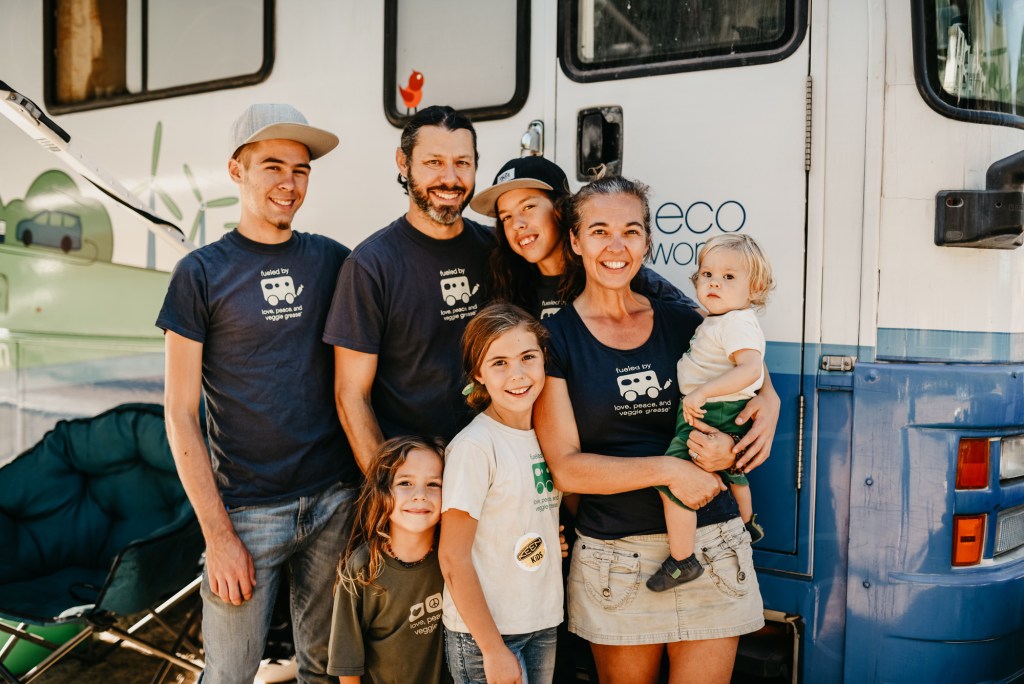
Photo Credit: Deanne Curry
In 2009, Clint and Angela Malson thought they were living the American dream in a suburban home on a cul-de-sac in a small town in Florida. At the time, they had three kids and an online business called Eco Womb devoted to helping families discover eco-friendly products for their children. Additionally, Clint had a full-time web design job. But Clint had to commute long distances to and from work and Angela wanted more family time and adventure. Visiting family in Maryland, North Carolina and Texas never seemed to happen, either.
“We actually were outside a lot as homeschoolers,” Angela said. “The boys were in baseball … we just weren’t spending a lot of time all together, and no time camping.”
Then, one day, a traveling family blog that Angela followed announced they were selling their veggie-fueled, solar-powered RV. She told Clint they had to buy it.
“He was like, ‘We have a mortgage to pay for, and where are we going to park it? The [homeowners association] will never let us park it here.’” But Angela knew this was something they needed to do.
The Malsons hadn’t grown up traveling much, so it would be an opportunity for the kids to see the Rocky Mountains and the Pacific Ocean, and for the whole family to spend more time outdoors. They could also ensure their kids led environmentally friendly lives. Clint was able to talk his boss into letting him work remotely, and they hit the road.
Living in a small space meant they eventually closed down their shop and turned Eco Womb into an educational nonprofit, which the family uses to teach others how to live sustainably in cities and towns across the U.S. Clint also founded a design firm.
Now a family of seven, the Malsons have traveled to more than 21 national parks and countless forests. They’ve seen every state in the lower 48.
Traveling with five kids can be a challenge, but the Malsons say they love knowing home is wherever they stop that week. “It’s not hard because our children always have their home with them. We can be out in the world in a new place, and then they come home to their own pillows and blankets.”
Less Junk More Journey
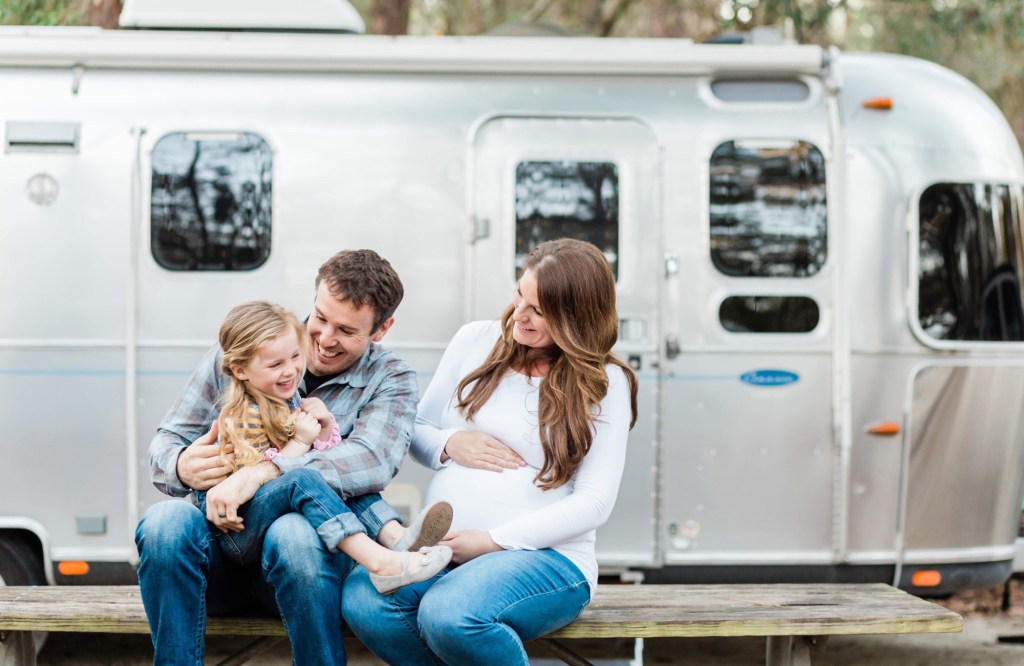
Photo Courtesy: Marissa and Nathan Moss
Marissa and Nathan Moss began a gradual transition to full-time familyhood four years ago. Marissa was a labor and delivery nurse who worked two or three consecutive months, allowing her to earn extended time off of work. Nathan freelanced, doing search-engine optimization for companies. They began by investing in a 43-foot fifth wheel, taking small trips for a few weeks at a time. When they returned home, they stayed at campgrounds or parked temporarily in friends’ and families’ driveways.
“You open your door to your house and you know what you are going to get. In an RV, you forget where you are and it’s a different world all the time.” – Nathan Moss
While on the road, the Moss family started recording their adventures and sharing them with the hashtag #lessjunkmorejourney. Being online savvy, Nathan was able to gain traction quickly with their name, and their following grew. They recorded detailed videos—some up to 30 minutes long—documenting every aspect of their RV life, from how to pick an RV to how to renovate your RV while living in it.
“You have to be adventurous and enjoy the outdoors,” Nate said. “Roll with the punches—if something hasn’t broken in a couple of weeks you have to be like, ‘OK, it’s coming.’ I’m always afraid to say, ‘Marissa, something hasn’t broken lately.’ It’s part of the journey.”
People love their stories so much that the Mosses are able to earn an income from their Youtube channel, which now has more than 100,000 subscribers.
“It’s all about freedom and flexibility for us,” Nathan said. For now, the Mosses are hunkered down in the driveway of a family member’s home, awaiting the birth of their second child. Marissa wanted to deliver where she had worked as a nurse, in a comfortable and familiar environment. Still, once baby number two arrives, they’ll be back on the road.
“I like the feeling of opening your door and you are surrounded by glaciers and bald eagles flying by,” Nathan reflected. “You open your door to your house and you know what you are going to get. In an RV, you forget where you are and it’s a different world all the time.”
The Ericksons
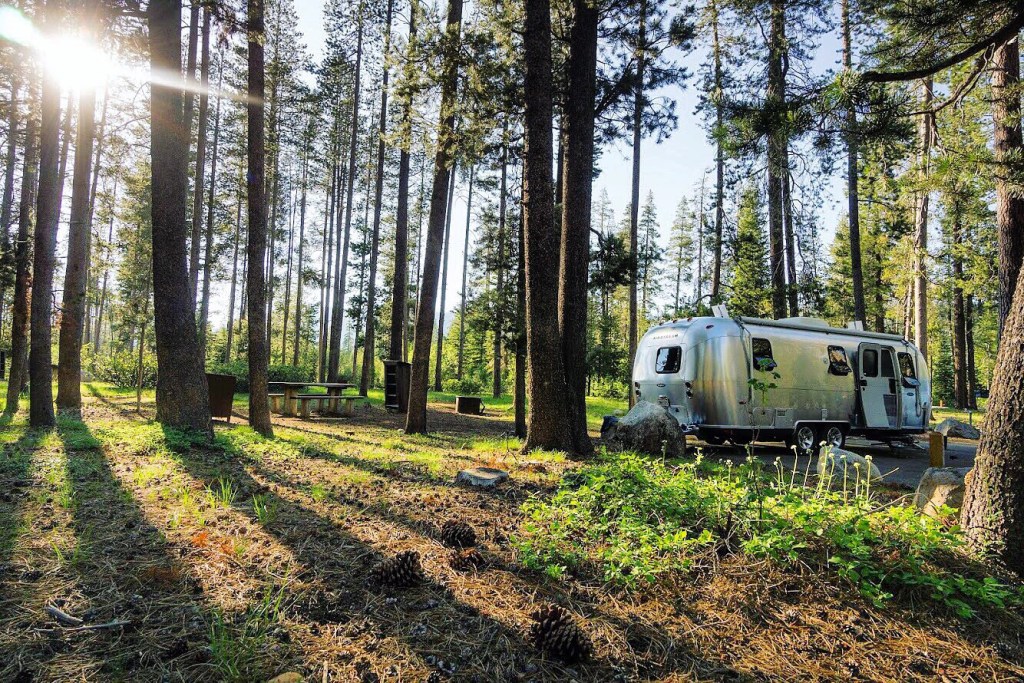
Photo Courtesy: The Erickson Family
The Ericksons are what some full-time families call “part-timers.” About two years ago, they decided they wanted to test out a full-time lifestyle, but they loved skiing and couldn’t see their family of five wintering in a trailer with all their gear. They owned a home in Salt Lake City, which gave them prime access to the mountains, so they converted their basement into a space where they could store their personal things and began renting their house for six months of the year. Then, they took to the road.
“There are people whose primary reason for the lifestyle is to live off-grid, unencumbered by things like a mortgage or electric bills, and then there are those who just love to travel. While they overlap, there seem to be two distinct crowds among full-timers,” Alyssa Erickson said.
The Ericksons have three school-age kids who are 8, 10 and 12. To make what they call their “location independent” lifestyle work, they homeschool for part of the year. However, their local school also has a flexible program that lets the kids attend when they’re home. Sometimes the Ericksons live in Salt Lake City, sometimes they’re in their camper and sometimes they’re in a long-term rental.
Alyssa said she thinks many full-time families are those who want to live outside the box and explore a region more deeply. Last year, for example, the Ericksons planned a trip to the East Coast, and gave themselves a window of six months to do it. They made it all the way to Nova Scotia before heading back for an epic winter of skiing in Utah.
“We just believe in living the way we want to live, and sometimes that’s in a house and sometimes that’s in an RV and sometimes that’s in a [vacation rental]. I would still consider all of these full-time traveling, but the way we look at it is that we are just having a shared experience with our family.”
Ready to discover more full-time families? Check out these Instagram accounts:
Related articles:


